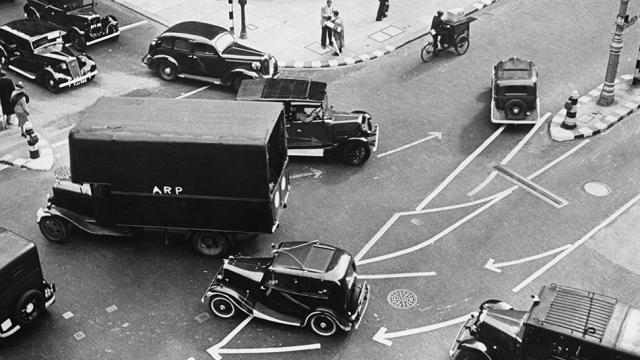One of the more interesting aspects of urban life during the bombing raids of World War II was the clever and strategic re-designing of the London streetscape so that residents could live in a state of blackout.
By turning off the lights at night, residents could hide the city from aerial view and thus leave Nazi bombers flying around in the darkness, unsure of where to drop their bombs. It was a different form of camouflage, one that hid the city against the surrounding landscape by plunging its streets and buildings into darkness.
An obvious problem immediately presents itself here, however, which is that with only very minimal outdoor lighting to guide them, how were cars, pedestrians, trains, and even dogs supposed to navigate the city safely? A meticulous and detailed re-painting of everyday objects and landmarks was thus launched, with everything from curbs to clothing getting rhythmic white bands and stripes added to them for easier detection.
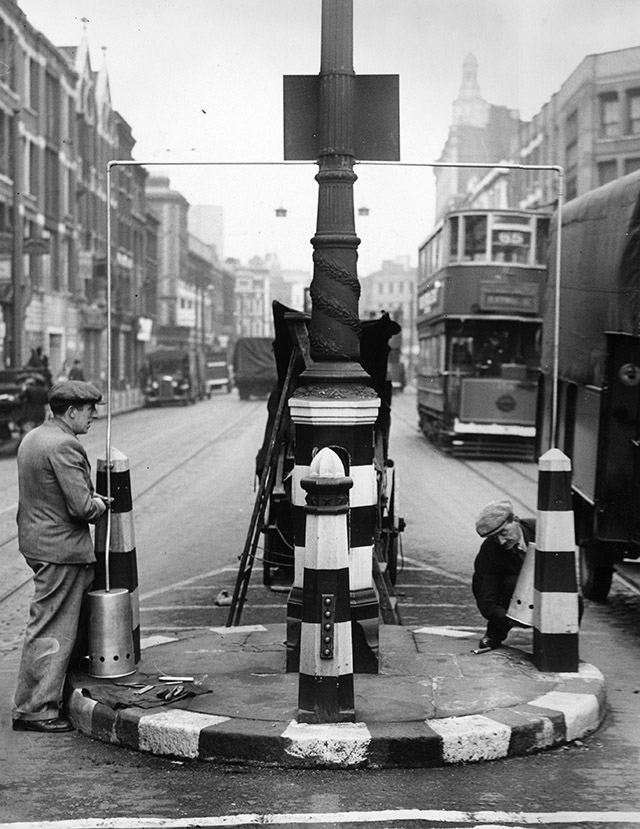
Here are some photos, all courtesy of the Hulton Archive at Getty Images, showing life in wartime London adapting through the application of black & white graphic design and some makeshift interior decoration — stripes became a kind of enforced zeitgeist — all to help fool the Nazi bombers buzzing far above.
From white bumpers on cars, applied with a quick coat of paint —
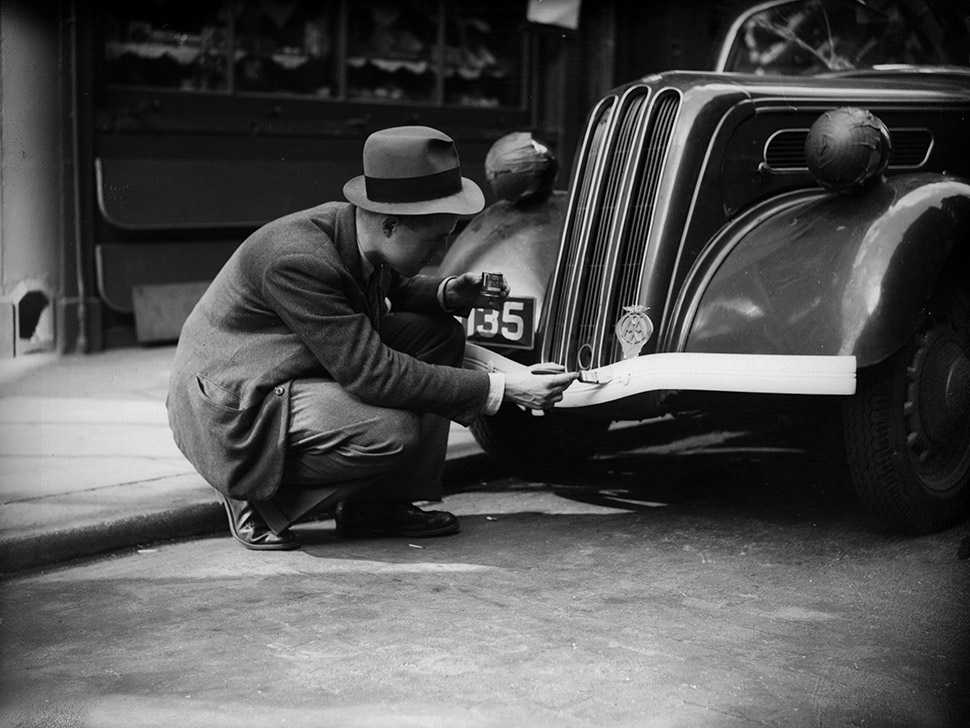
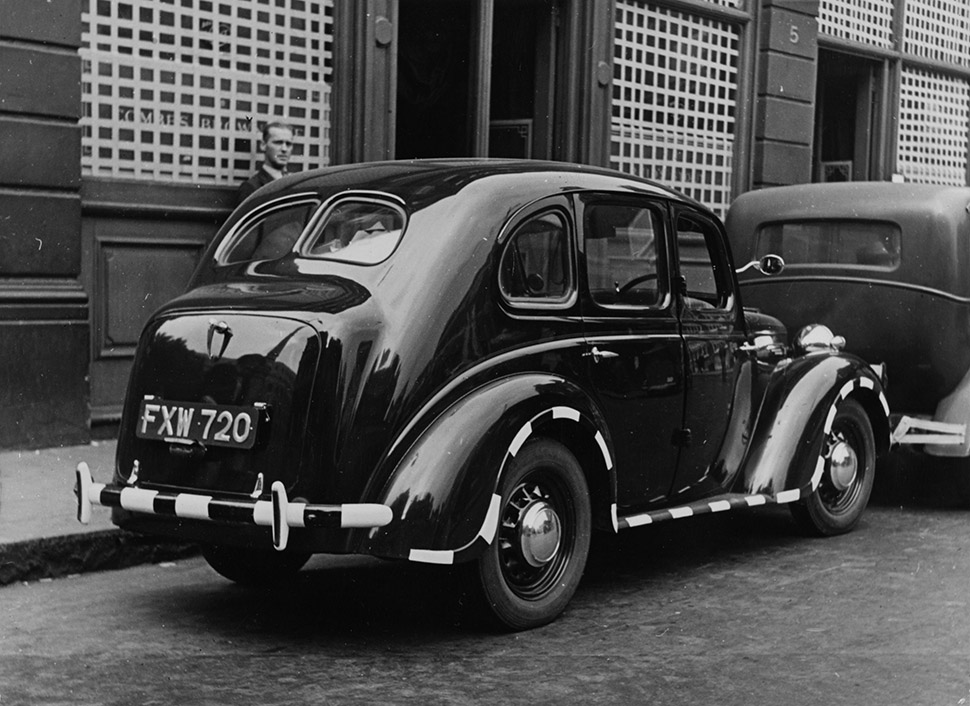
— to steps, curbs, and even lampposts, the city became a monochromatic pattern of reflective stripes and checkerboards, stuttering the way from borough to borough.
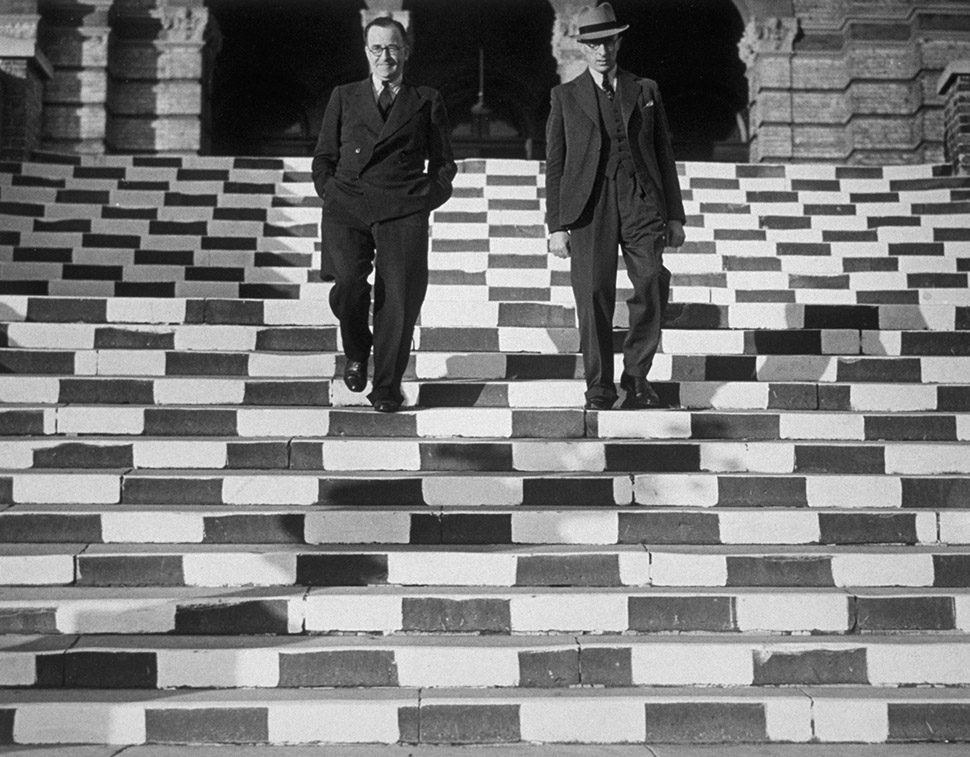
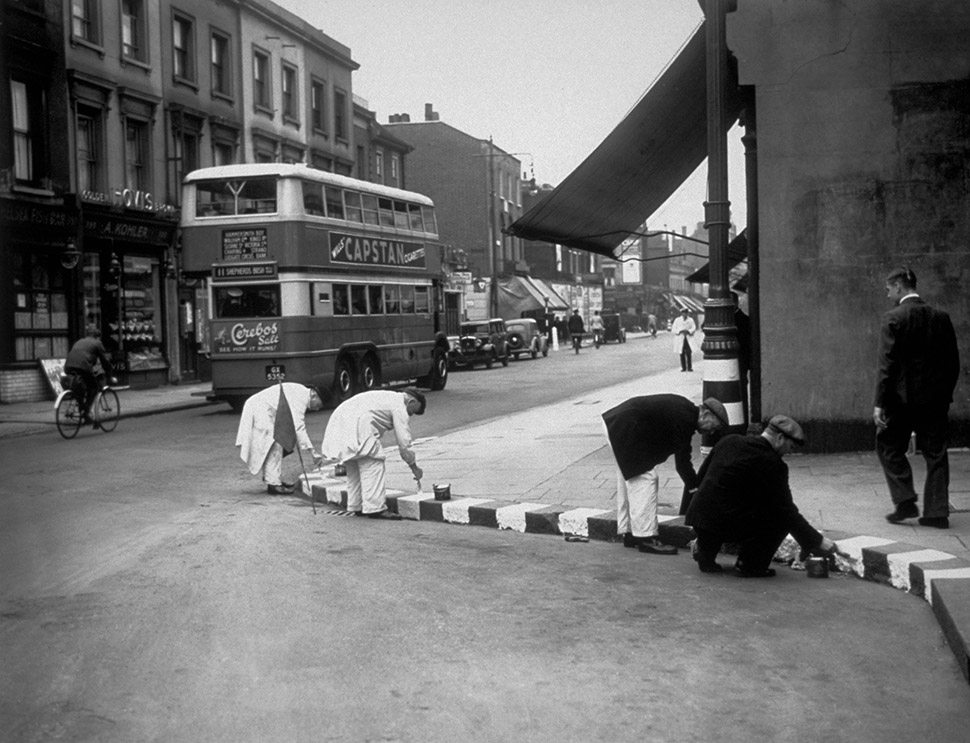
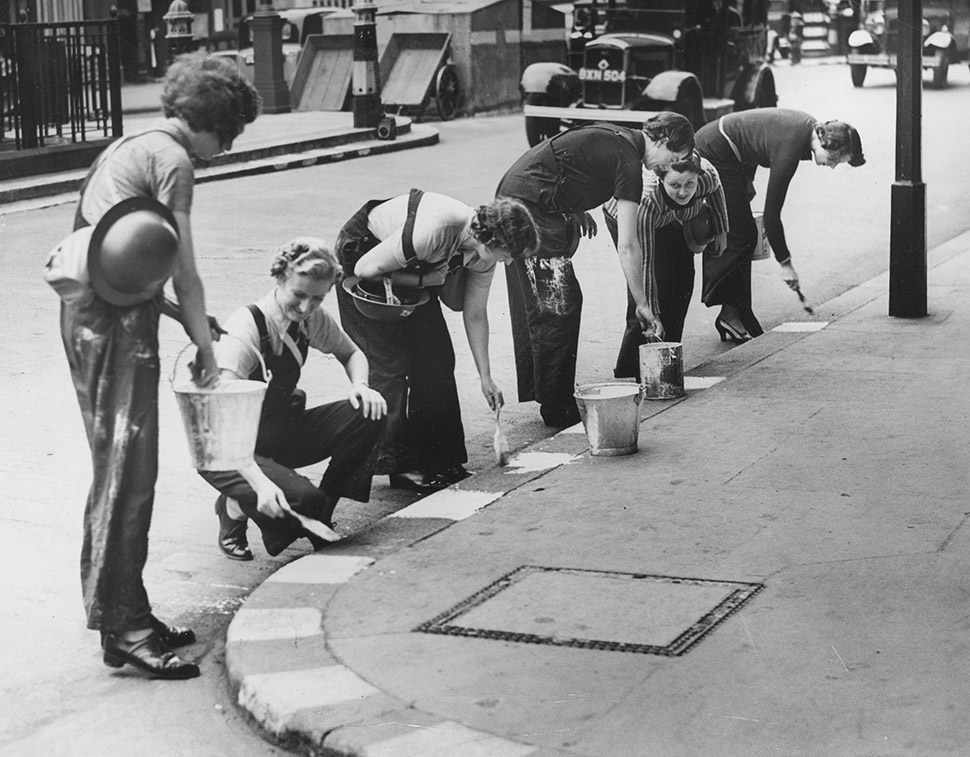
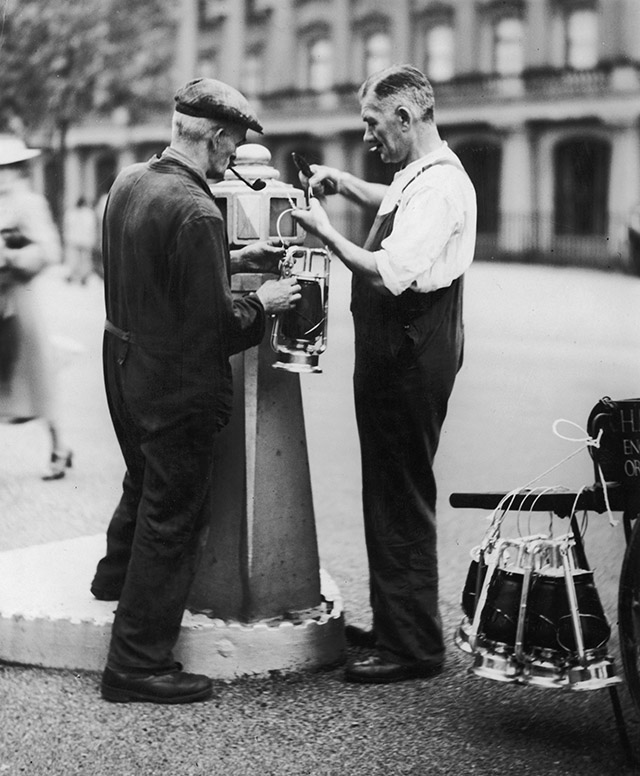
But perhaps my favourite details of this strategy for emitting as little light as possible come from the weird additions made to architectural structures, whether sealing up windows on trains to prevent any light from leaking out as the cars clinked along their outdoor route in peace and darkness —
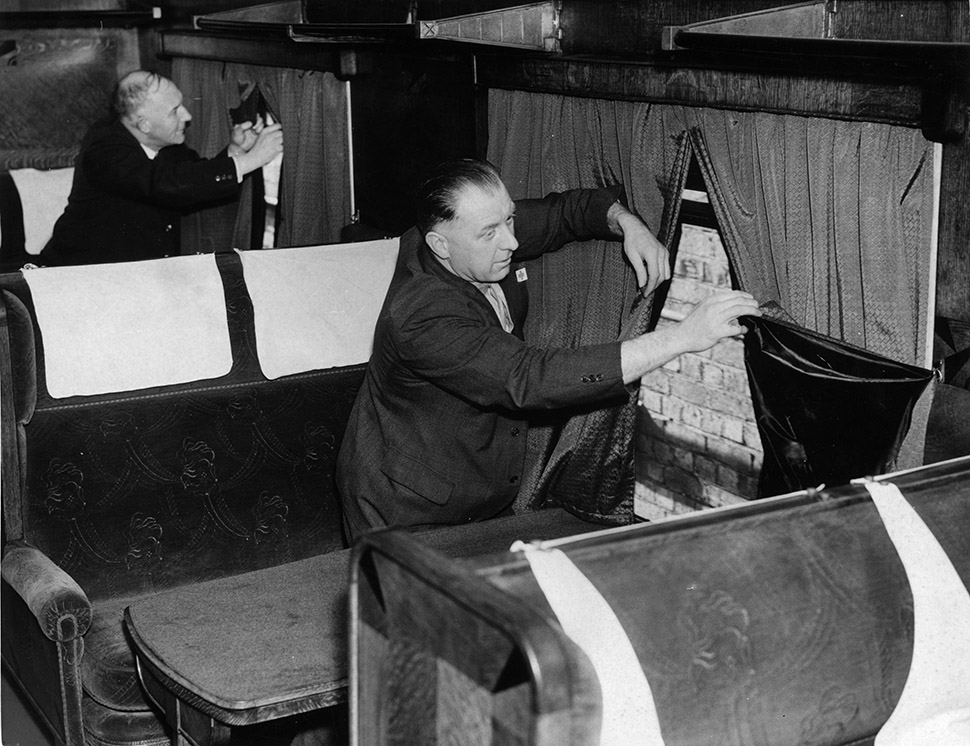
— or installing DIY roofs known as “entrance hoods” to the top of Tube station stairs in order to keep all that light shining only for those below.
These hoods were like deconstructivist architecture before the name, a thrown-together metal bird’s nest of corrugated steel, concrete blocks, and other everyday materials that, who knows, perhaps even supplied an early architectural precedent for the later work of a young Frank Gehry with his house in Santa Monica.
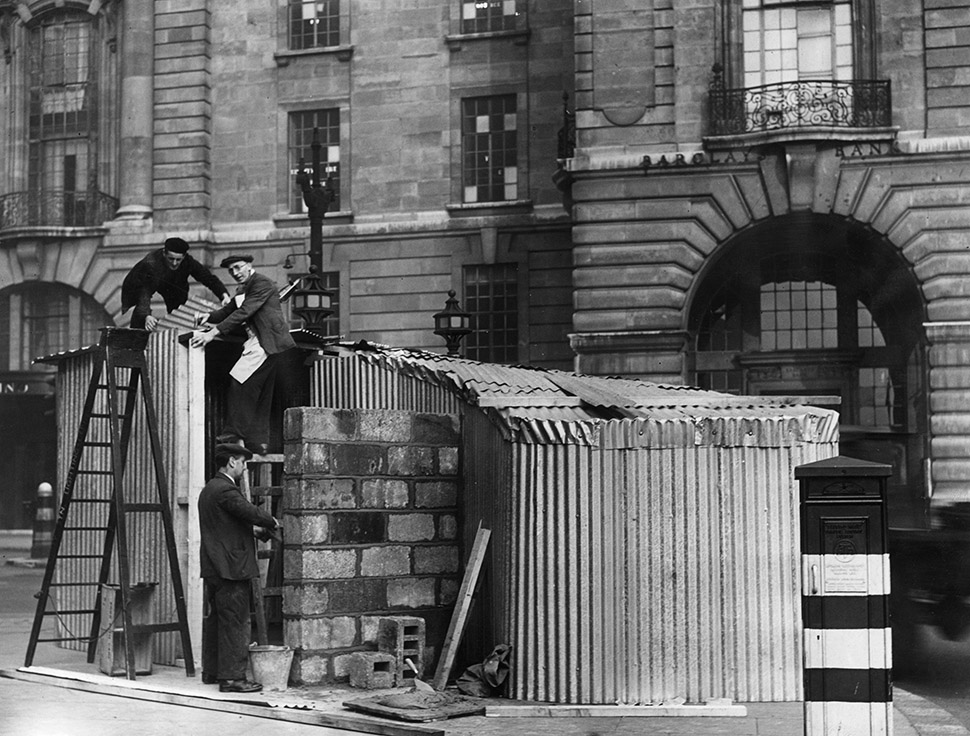
Yet all was not just at the architectural or urban scale. Unfortunately, Getty Images doesn’t seem to have the photos I was looking for here, but even the clothing of London residents changed, incorporating white bands and patches on the sleeves, legs and shoulders, even on the brims of hats, so as to increase visibility in dark situations.
Indeed, to hail a cab — cars could drive, albeit with their lights severely reduced by blinds and shutters — one was meant to wear a pair of white-palmed gloves, and to briefly illuminate the palm of the hand in order to indicate where you were standing and that you needed a cab.
Even dogs were outfitted for their new lives in this self-imposed urban darkness.
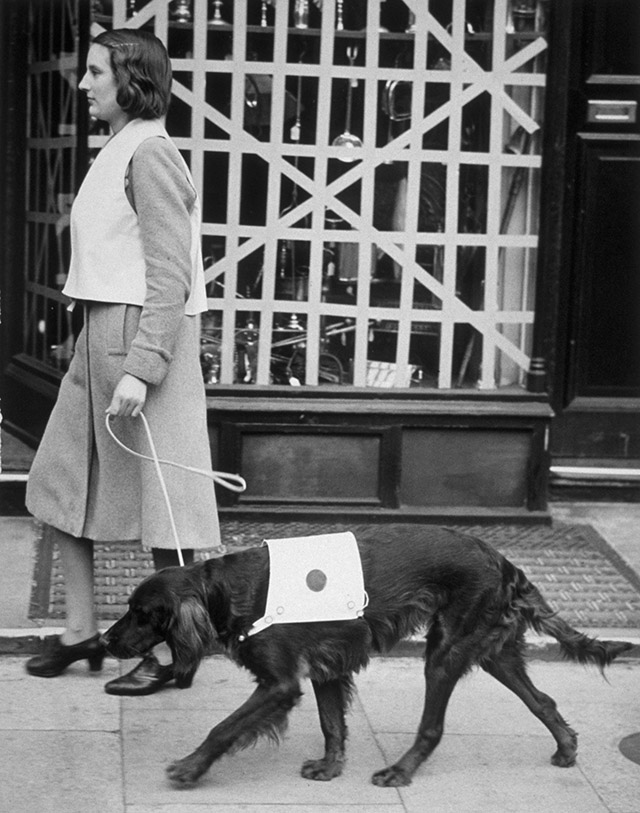
Of course, it wasn’t absolutely pitch black, as the white palm and flashlight example makes evident. Pedestrians and cyclists were advised to walk at night with small flashlights, just enough to indicate their presence to other walkers and enough to help guide themselves home past the striped maze of strange white markings that had appeared throughout the city.
These flashlights — captured in the incredible, long-exposure image seen below — formed a beautiful tangled mass of lights, streaming through and around intersections and corners, into and out of shops, around and alongside one another.

That this surreal and temporary redesign of the city was motivated by war — or, more specifically, by the terror of avoiding Nazi obliteration from above — should not take away from the possible urban lessons such a remaking of the city might offer us today.
In other words, these easy, DIY ways of altering the metropolis so that residents can navigate without the benefit of excessive electric lighting might indicate other, equally clever means for preparing ourselves for future blackouts. These are simple design alterations that make the city resilient, safe, and navigable during power cuts, and, in many cases, require nothing more than a patterned coat of paint and some specially designed outerwear.
Could the city — any city, any town — incorporate little low-cost bits and bobs like this and make them a permanent part of the built landscape, something that would help both the visually impaired and people without electric lighting get by?
Picture: Getty Images/Hulton Archive
